South American gems
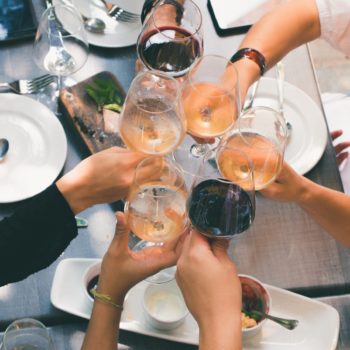
Wine sales in Ireland continue to increase, meaning innovative Chilean and Argentinean produce is being poured into more and more glasses. Here, Paulie Doyle highlights some of the leading brands within this sector
17 September 2018
Chilean wine is consistently one of the highest-selling wine shares in all of Ireland, maintaining flavourful tastes, a diverse range of options, high quality and fair prices – all the primary characteristics sought after in a wine purchase. Argentinean wines have also established a stronghold in Irish wine cabinets, rapidly expanding their exportations of wine in the last ten years.
Within Argentinean wines, Malbec comprises the largest production within Argentina and continues to be a top pick within the Irish market. The Argentinean and Chilean wine industry is chock-full of innovative ideas, such as the up-and-coming trend to replace oak barrels and steel tanks with cement tanks for fermentation, producing flavours that taste much more clean and pure – reflective of the larger societal movement toward leading a clean lifestyle. In fact, Chilean wine is the most popular wine with Irish consumers, followed by Australian, French, Spanish and Italian.
Ireland’s most popular wine brand
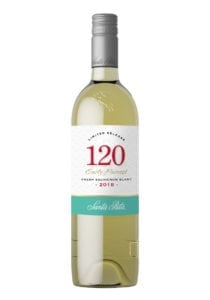
Santa Rita 120 Sauvignon Blanc and 120 Cabernet Sauvignon are Ireland’s number one white and red wines respectively
Established in 1880, Santa Rita is one of Chile’s oldest and most respected wineries. It’s also the most popular wine brand in Ireland with Santa Rita 120 Sauvignon Blanc and 120 Cabernet Sauvignon the best-selling white and red wines respectively. Whilst the business is steeped in tradition, Santa Rita is a contemporary, modern producer, having invested continually to ensure that it produces the best quality wines in the most sustainable way possible. The brand’s vineyards are all ‘Certified Sustainable’ and it was awarded ‘Winery of the Year 2016’ with both accreditations being awarded by Wines of Chile. Santa Rita’s ‘WiSe Project’ in the Maipo Valley is a revolutionary approach to ‘growing wine’ by mapping and planting varietal-specific plots working through a code of best practices, parameters and principles, all with a US$20m investment plan.
A €1 million per annum investment in both direct and indirect marketing initiatives spans RTĖ prime time sponsorship slots including popular US drama Homeland along with Irish drama, Acceptable Risk and a comprehensive outdoor, printed and digital advertising campaign. Experiential marketing is implemented through sponsorship of a concert series at the Little Museum of Dublin and Gold award winning show gardens at Ireland largest horticultural and family festival: Bord Bia’s Bloom in the Park.
A three-year partnership between Arsenal FC and Santa Rita wines was signed in 2016 as part of an international marketing campaign. This partnership forms one of the key components of the ’Living la Vida 120’ marketing campaign.
For more information, visit www.santarita.com.
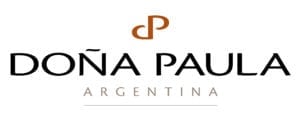
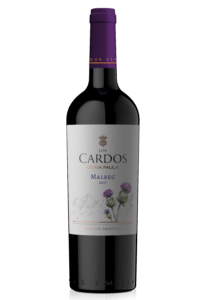
By introducing new varieties, blends and styles, Doña Paula is pushing the traditional boundaries of Malbec wine
Magic from Mendoza
Founded in 1997, Doña Paula in Mendoza celebrates its 21st anniversary this year. It is an outstanding modern winery at the forefront of exploring and investing in new, high quality wine regions in Argentina. Spanning 703 hectares of prime vineyards sites, taking in Ugarteche in Luyan de Cuyo and Gualtallary, Tupungato and Altamira in the Uco Valley, Doña Paula owns all of the land it makes wine from. Sustainability is high on the agenda with the belief that sustainable cultivation really maximises the true expression of terroir.
With many areas receiving below 250mm of rainfall per annum, a large percentage of the wine growing regions within Mendoza are considered desert. To many this could be considered a challenge, but with careful management along with in-depth and measured research, Doña Paula is achieving some fantastic results. The forward-thinking viticultural and winemaking team behind the label is considered by many to be leading the way in terms of innovation, pushing the traditional Malbec boundaries by introducing new varieties to the region, new blends and new styles of wine.
For more information, visit www.donapaula.com.
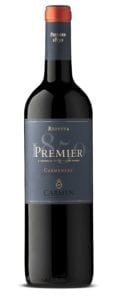
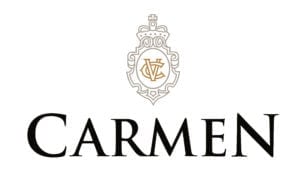 A true pioneer
A true pioneer
Founded in 1850 by Christian Lanz and named after his beloved wife, Carmen is Chile’s oldest and most historic winery. From its inception, Carmen has been recognised as a pioneer in winemaking and viticulture, a tradition that continues today. It was 20 years ago in the Carmen vineyards that the iconic Carmenère grape variety was re-discovered. Carmen became the driving force behind the development of Carmenère in Chile and launched its first varietally labelled bottle, blended with Cabernet Sauvignon, in 1996.
Sustainability is top of the agenda in every part of Carmen’s wine making process, from the vineyards to the final distribution. The winery has a fully integrated environmental and commercial sustainability programme in place, with chief winemaker Emily Faulconer very proud of the wines she produces. Carmen chooses the best terroirs for its grapes and makes the best wines it can, allowing the true identity of both the land and the grape variety to shine though in each bottle of wine produced.
For more information, visit www.carmen.com.
On your Bicycle!
Cono Sur’s famous Bicicleta range of wines will see a revamp this year, with a new look bottle and label. Pioneering the bicycle, for all of the positive connotations it possesses: sustainability, the attitude of those who use them, challenge and discovery. An embossed bottle will roll out across the range, while the Sauvignon Blanc variety will switch from a Bordeaux to a Burgundy, to align the series.
Cono Sur’s sustainable practices led to it becoming the world’s first carbon-neutral winery. Once grapes are picked from the vines, they are transported by bicycles, limiting the brand’s carbon footprint and exposure to pollutants. The humble bicycle has therefore been honoured with the name of the brand’s most popular range, Bicicleta, Cono Sur.
Cono Sur is exclusively distributed in Ireland by Findlater & Co.
Expressing Chile’s wonderful natural resources
Santa Carolina is part of Carolina Wine Brands, one of the leading wine groups in Chile, which belongs to the Watt’s S.A. agribusiness group owned by the Larrain family. With a history spanning over 140 years, Santa Carolina is one of the oldest and significant wineries in Chile.
Santa Carolina’s elegant range of wines is a true expression of the wonderful natural resources Chile has to offer. From the modern fruit-driven varietal and elegant Reserva range to the classic Barrica Selection wines, there is something to satisfy a wide spectrum of tastes.

All wines in the Santa Carolina Cellar Selection range have been winners at the NOffLA Irish Wine Awards
Santa Carolina Cellar Selection is keen on price while over delivering on quality. There are four in the range – Merlot, Sauvignon Blanc, Cabernet Sauvignon and Chardonnay. All wines in the range have been winners of the NOffLA Irish Wine Awards; most recently the Cabernet Sauvignon and Chardonnay are silver winners 2017/2018. There is a medal promoting the Irish Wine Awards success on the Cellar Selection bottles to further promote its quality to consumers.
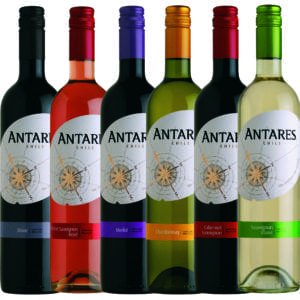
The Santa Carolina Antares was specifically designed for the independent trade
The Santa Carolina Antares brand continues to be a success with Irish retailers and consumers for more than 10 years now at an RRP of €9.99. Specifically designed for the independent trade by its Irish distributor Ampersand, it competes with the multiple trade prices but with the highest quality wine. The range offers six varietals and also has past winners in the Irish Wine Awards.
Both of the above ranges have new 48 bottle FSDUs, which showcase the scenery of Chile on the design and present the product to consumers as a premium wine brand.
For more information on Santa Carolina or if you would like to improve your wine offering, contact your Ampersand representative, call the sales-line directly on 01 4130150 or visit www.ampersandsales.ie.

Terry Pennington
Q&A with Terry Pennington, commercial export director Europe, Santa Rita Estates
Q: What are the brand’s main initiatives to drive sustainability forward?
A: For Santa Rita, sustainability starts in the vineyard and permeates everything we do. We currently have a 30-year plan, looking at what we are forecasting to produce and how, matching this against evolving consumer needs.
Sustainability is not just limited to the vineyard but in every aspect of the business to ensure that we have a future. The welfare and livelihood of hundreds of our Chilean workers and their families rely on our success. One way of implementing this is by adapting the wine selection we offer to Irish shoppers, to reflect the changing dynamics of the consumer. In 2017, we introduced two new Santa Rita 120 varietals, Pinot Grigio and Malbec, which have frankly exceeded our expectations. 120 Pinot Grigio has been so successful that we have had to divert all our wine to Ireland to meet demand and are now adjusting our vineyard plans and future forecasts accordingly.
In early spring this year, we introduced the first South America wine from the 2018 harvest. Santa Rita 120 Early Harvest Sauvignon Blanc 2018 is crafted in a lighter, fresher style with a lower alcohol level at 11.5%. The initial response from shoppers for this limited edition wine has been excellent; all our allocation was sold within a matter of weeks and we will extend production in 2019.
Q: Santa Rita wines have won many awards. How important are such awards in helping to promote the quality of your portfolio?
A: Every year there seems to be new wine competitions and we continue to participate in these to help support consumer awareness for Santa Rita. It is fair to say that an accreditation from independent experts will help grow awareness and credibility. There are, of course, certain awards that resonate with us over a long period of time and these include:
1. Gault Millau 1987 – Santa Rita Medalla Real Cabernet Sauvignon is the first wine from Chile to win the ‘Wine Olympics’
2. Decanter Magazine – Santa Rita Casa Real Old Vine Cabernet Sauvignon 1989 becomes the first wine from South America to be awarded Wine Legend status
3. Drinks International – Since 2010 Santa Rita has consistently been one of the World’s 50 Most Admired Wine Brands
As an outcome for a consistent, high quality approach and the many accolades that have been received, in December 2016 Santa Rita was awarded Winery of the Year by Wines of Chile.
Q: How will you continue to drive further growth in the Irish market given your considerable success to date?
A: Working alongside our import partners in C&C Gleeson and our valued client base throughout Ireland, we continue to update and refresh our portfolio. In June of this year, we launched our new Limited-Edition Rosé. Produced in the fashionable ‘pale-salmon’ coloured style this wine is made from Cabernet Sauvignon and Syrah and has sold incredibly well in what is considered a fairly challenging (but developing) premium rosé market with the first 60,000 bottles already in wide distribution and depleting fast.
We will continue to invest in communicating the Santa Rita brand in Ireland through the Living La Vida 120 campaign which has been running for three years now across a multitude of formats.
Q: Santa Rita is consistently a topseller in Ireland. What are the factors that account for the brand’s popularity here?
A: Santa Rita 120, our best-selling brand in Ireland, was first imported in 1989. The brand offered consistent quality, easy to recognise grape varietals and great value for money. Since then, we have continued to evolve the style and varietals on offer according to the consumers’ taste. However consistency in the quality of the offering and value for that quality remains a winning combination. The results speak for themselves.



 Print
Print

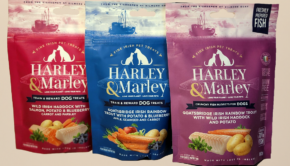




Fans 0
Followers